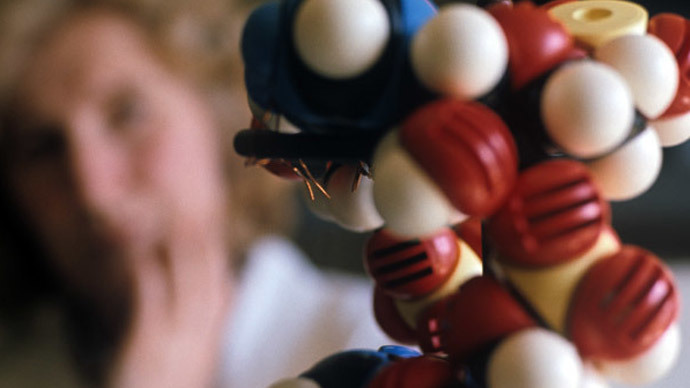Russian scientists find new way to repair DNA that may cure Alzheimer’s

A group of Russian scientists have discovered a new method of DNA repair which may be able to prevent and cure neurodegenerative diseases, such as Alzheimer’s or Parkinson’s and even stop the process of cell death.
The research team led by Vasily M. Studitsky, professor at the Lomonosov Moscow State University, published their findings in an article “Structure of transcribed chromatin is a sensor of DNA damage” in the Science Advances journal.
“Early detection and repair of damaged DNA is essential for cell functioning and survival,” says the study.
READ MORE: Survival genes: Scientists find DNA mutations that helped Russians during Leningrad siege
The paper raises the question of single-strand breaks (SSBs) which are called in the research “common DNA damages generated during various processes of cell metabolism.”
“Unrepaired SSBs can interfere with transcription, replication, and DNA repair; induce accumulation of double-stranded DNA breaks; increase genomic instability and apoptosis [process of programmed cell death]; and lead to severe neurodegenerative diseases.” Alzheimer’s, Parkinson’s disease and spinal muscular atrophy are examples of such diseases.
Researchers discover new mechanism of DNA repair http://t.co/bUunjqiVhz#PhysOrg
— Michael Hawthorne (@MickeyDangerez) July 3, 2015
READ MORE: New research reveals why animals don’t get schizophrenia and humans do
Studitsky told science portal Psys.org that the team of scientists “has shown, not yet in the cell but in vitro, that the repair of breaks in the other DNA chain, which is ‘hidden’ in the nucleosome, is still possible.”
“According to our hypothesis, it occurs due to the formation of special small DNA loops in the nucleosome, although normally DNA wounds around the histone ‘spool’ very tightly," he added.
As the DNA molecule is chemically unstable, its damage detection and repair are needed.
“These observations raise the possibility that nucleosomal structure could affect the process of detection and repair of DNA damages,” the study says.
The researchers added that their findings can suggest “the existence of a chromatin-specific, transcription-dependent mechanism that allows detection of NT-SSBs that are otherwise hidden in the chromatin structure.”












